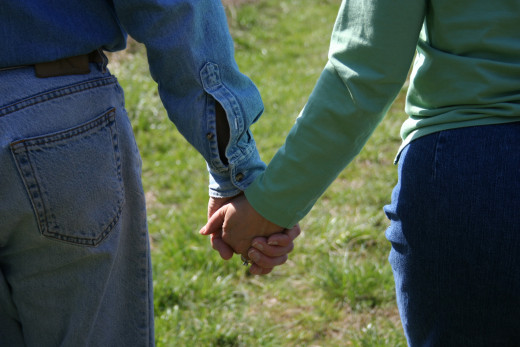How Are Women Treated Different From Men

What is the Relational-Cultural Model of Personality?
Developed due to evidence that women were being misunderstood and misrepresented by traditional psycho-dynamic models, the relational-cultural model provides a better grasp of both the male and female development while placing great emphasis on circumstances. The relational-cultural theory explains how people suffer when they are isolated and they grow and thrive when they are involved in healthy relationships. Relational-cultural theory is a theory of counseling and development that came about in order to fill a gap that traditional models ignored and provides and alternate and inclusive model of development across the life span.

History of the theory
Jean Baker Miller is the founding director of the Stone Center at Wellesley College and author of the book Toward a New Psychology of Women which introduced a new perspective on the psychology of women.The book was written after Millers clinical practice with women where she realized that the centrality of relationships in the lives of her clients was not consistent with traditional theories of counseling and of human development that she had been taught in medical school.The traditional theoretical models put focus on individuation, separation, and autonomy rather than relationships as markers of emotional maturity and psychological health.
Other major contributors to the relational-cultural model include Carol Gilligan who worked with issues associated with female moral behaviors and judgments, indicating how different female morality is from men.And also Judith Jordan who helped Gilligan and Miller create the Stone Center relational model, which consists of the core ideas and theories of the relational-cultural model.
Major contributors to this model worked together at the Stone Center at Wellesley College to expand these ideas into what is known as the Stone Center relational model .
The model includes the following main ideas:
That people grow through and toward relationships throughout their life span.
Movement toward mutuality rather than movement toward separation characterizes mature development.
Relational differentiation and elaboration characterize growth.Mutual empathy and mutual empowerment are at the core of growth-fostering relationships.
In growth-fostering relationships, all people contribute and grow or benefit;development is not a one-way street.
Therapy relationships are characterized by a special kind of mutuality.Mutual empathy is the vehicle for change in therapy.
And finally that real engagement and therapeutic authenticity are necessary for the development of mutual empathy.
Founders of the theory believe that people grow in, through and toward relationships especially women whose psychological well-being thrives on relationships.Healthy relationships have a vital ingredient, mutuality which gives each person a sense of self but also an awareness of the other and an openness to have an impact on the other.
These healthy relationships are characterized by having five main ingredients:
Each person feels a greater sense of zest.
Feels more able to act and does act.
Has a more accurate picture of her/himself and other people.
Feels a greater sense of worth and feels more connected to others.
Exhibits a greater motivation to connect with others.
When mutuality doesn’t exist in the relationship there is a disconnection with self and others.When someone experiences a disconnection, they suffer in states of shame and tension.When this happens often it leads to chronic disconnection, which results in suffering and isolation and can be very traumatic and mentally harmful to someone.

How is the Relational-Cultural theory applied in therapy?
A counselor using the relational-cultural approach will try to help their client become more connected with themselves and other people by understanding the reasons for their disconnection. I will now provide several examples to stress the significance and validity of this theory. One example of the relational-cultural model would be a young woman with an eating disorder. The eating disorder is often used to disconnect from others when they feel their bodies are different from what is socially considered normal. Because of a sense of shame and unworthiness brought on by things like humiliation, violence, neglect, ridicule or abuse, someone might begin to suppress themselves and their feelings from others and possibly use an eating disorder behavior as a strategy of disconnection in the hopes that that behavior might help them to feel safe and not as vulnerable in relationships. Relational group therapy is often helpful in treating eating disorders like bulimia, and relationally focused treatment programs that integrate partial hospitalization have also been found helpful.
Self Injury
Self-injury is another example of a behavior that is often exhibited by people with disconnection issues. Not only does self-injury disconnect the person from him- or herself and the body, it is also used to regulate emotions and relieve tension when someone feels overwhelming emotion. From a relational-cultural point of view, the events that lead to someone using self-injury is really a pattern of events, relationships and interactions that are built up over time into a relational template that allows one to withhold their true emotions from others. At the same time, the person wants connection but is afraid to reveal their true self; so, the individual becomes distant or acts in a way which they only think the other person in the relationship wants them to act. This type of behavior is used by an individual as self-protection and with each interaction it seems more legitimate, and the self-injury becomes even more self-protective until finally even just the memory of a painful experience can cause someone to injure themselves. It is important in this case to use counseling to help a client establish real connections with real feelings with others.

Relationships and Disconnection
Often times, especially in the case of young and emotional girls who have been abused and neglected, individuals experience both a longing for and a fear of connections. In these cases where one believes that relationships are dangerous, the use of the relational-cultural theory to provide group interventions will give the individual a safe space to gain a better understanding of their interpersonal relationships and evaluate their strategies to cope.
When people experience disconnection, they have a feeling of isolation that puts them at high risk of developing emotional and psychological problems. Relational disconnections and the sense of isolation are often the result of personal experiences of power differentials, gender role socialization, racism, cultural oppression, health disparities, hetero-sexism and other social injustices that create feelings of condemned isolation for people in marginalized and devalued cultural groups. For those who experience this isolation, they carry a deep feeling of shame and beliefs that they are defective as humans and end up blaming themselves for personal failures that are really often beyond their control. Still, people have a deep yearning for a connection, for a sense of belonging, and for social inclusion, so often times the ones who feel defective and at fault end up hiding or denying parts of their lives and experiences as a strategy in order to relate to others.
From a cultural point of view, disconnection often occurs because more traditional cultures view men as a higher power leading to women being in relationships that are not mutual. The relational-cultural model does not use pejorative labels and is not pathology based, it also reexamines common descriptions for pathology. An example of this would be that women often express their vulnerability and emotional needs more often than men, therefore showing their “dependence” and automatically assuming the label of “dependent personality disorder” when in reality there should be a different diagnosis, or perhaps not one at all because dependence isn’t always a bad thing. Labels such as “dependent personality” can even be very inappropriate and often lead to one ignoring relationships that would otherwise help an individual heal. In many cases, someone who has been given this label is a victim of an act of domestic violence or sexual abuse so it would be much better and more correct to think of their dependence as an effect of post-traumatic stress disorder.

Family Dynamics
When considering the family dynamics of the relational-cultural model, often times individuals looking for connections in dysfunctional families who suffer from personality disorders are looking for connections from disconnected people which can lead to conditions such as phobias, eating disorders, depression, addictions and many other personality disorders. This is a valid example of a relationship shaping personality, and makes it extremely important to view a person as part of a relationship and not just an individual.
Goal of Therapy
The goal of relational-cultural therapy is to create relational resilience. “Relational resilience involves movement toward mutually empowering, growth-fostering connections in the face of adverse conditions, traumatic experiences, and alienating social-cultural pressures .” The ability to connect, reconnect and/or resist disconnection is what resilience means in this context. As an individual becomes more and more resilient, relational competence can be learned and achieved.
When providing therapy for someone who is suffering from relational disconnections, the main goal is to change their attitude and understanding rather than provide a set of techniques. By using the relation-cultural theory counseling process clients will learn; to recognize patterns of connections and strategies for disconnections that they are using, to understand what brought about these patterns of relating, to recognize that they now can choose how they respond to disconnections, and to collaborate with the counselor on way to work toward growth and connection.

Final Thoughts
Not only does the relational-cultural model of personality define women as separate individuals from men, but it also puts a greater importance on relationships rather than self in personality development. This is beneficial because human beings are “hard-wired to connect”. Neuropsychological research has shown that the social pain of exclusion or even just the anticipation of exclusion follows the same exact neural pathways as pain that is created by physical injury supporting the idea that social isolation can lead to enormous pain. Very recent research on brain neuroplasticity actually indicates that interactions can reshape ones brain, which validates the relational-cultural theory that growth fostering relationships are able to help rework destructive neural patterns that cause personality disorders.
The relational-cultural model does exhibit a few weaknesses that should be addressed. Weaknesses include the fact that separating men from women could possibly make women appear weaker and be seen as lesser beings. This plays into the bias that exists by labeling women as “too emotional” and hysterical while men are seen as independent, non-feeling, and rational. Also, being independent is often important for self growth and this model pushes aside ones need for independence and puts a need for attachments in its place.
The relational-cultural model gives counselors a theoretical foundation and it considers the role of gender as well as socioeconomic status, ethnicity, and a many other variables. It also gives them a philosophical base where they can view the counselor-client relationship, as well as the means by which personal growth occurs and the mutuality that is so important to the process of human growth and development.
With its stressing that men and women differ and their psychology should be looked at differently, the relational-cultural model of personality stands out among other theories. As I stated earlier, even though it does seem to show a few weaknesses and is a very new theory, I believe that it has extremely valid points and holds up to the theories that came before it.
In conclusion I would just like to add a personal note. Researching and learning about the relational-cultural model of personality has greatly helped me understand my own personality and situation as a woman. If I think of my own issues as a result of relationships rather than my own personal flaws it is much easier to understand why I am the way that I am. It’s obvious that women are different than men and that they put more faith into their emotions, but the fact that men don’t express their emotions as much doesn’t necessarily make them higher beings. As far as the men and women argument goes, I think it is important in relationships, for both genders to understand and respect each other for their differences rather than use it as ammunition to hurt each other. This will lead to healthy connections, rather than disconnections for everybody involved.
References:
Dana, L. C. (2008). Relational-cultural theory: A framework for bridging relational, multicultural, and social justice competencies. Journal of Counseling and Development : JCD, 86(3), 279-287. Retrieved from http://search.proquest.com/docview/218971953?accountid=32521.
Duffey, T. &. (2011). The role of relational-cultural theory in mental health counseling. Journal of Mental Health Counseling, 33(3), 223-242. Retrieved from http://search.proquest.com/docview/878947638?accountid=32521 .
Jordan, J. V. (2001). A relational-cultural model: Healing through mutual empathy, 65(1). Bulletin of the Menninger Clinic, 92-103. Retrieved from http://search.proquest.com/docview/200515034?accountid=32521 .
Magnavita, J. (2012). Theories of Personality. San Diego, CA: Bridgepoint Education, Inc.
Michelle, R. M. (2008). Maureen walker, wendy B. rosen (eds), how connections heal: Stories from relational-cultural therapy. Child & Adolescent Social Work Journal, 25(5), 443-446. Retrieved from: http://dx.doi.org/10.1007/s10560-008-0136-y.
Trepal, H. C. (2010). Exploring self-injury through a relational cultural lens. Journal of Counseling and Development : JCD, 88(4), 492-499. Retrieved from http://search.proquest.com/docview/750619649?accountid=32521 .
Trepal, H. C. (2012). A relational cultural approach to working with clients with eating disorders. Journal of Counseling and Development : JCD, 90(3), 346-356. Retrieved from http://search.proquest.com/docview/1024157572?accountid=32521 .
This content is accurate and true to the best of the author’s knowledge and is not meant to substitute for formal and individualized advice from a qualified professional.
© 2013 Cristina Cakes








